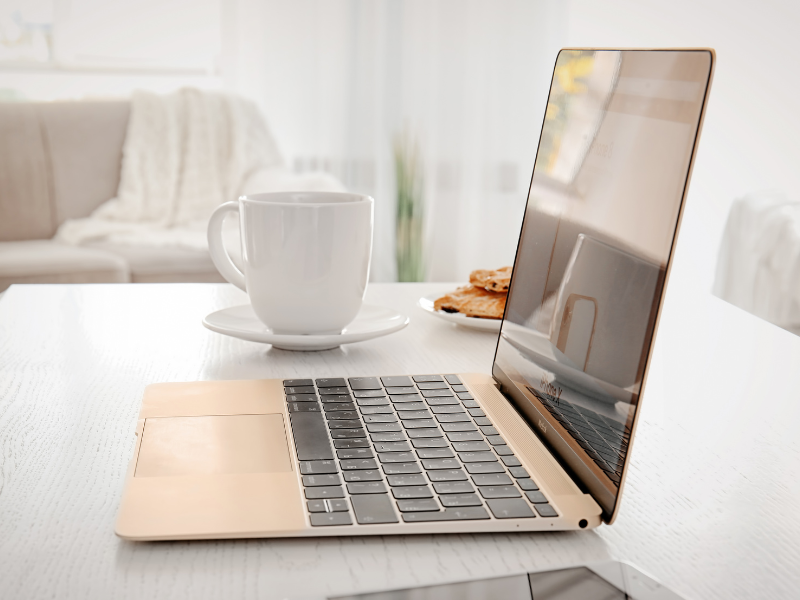
Introduction
MacBooks have become an integral part of our modern lives, offering incredible power and versatility. However, like any computer, they are not immune to viruses and malware. It’s crucial to be proactive in protecting your MacBook from these malicious threats. In this comprehensive guide, we will explore the world of MacBook virus removal, providing expert tips, step-by-step instructions, and valuable insights to safeguard your device. Whether you’re a Mac novice or an experienced user, this article is your go-to resource for keeping your MacBook secure and virus-free. Let’s dive in!
Understanding MacBook Virus Removal: How to Identify and Tackle Malicious Threats
As the digital landscape evolves, cybercriminals are constantly finding new ways to exploit vulnerabilities in our devices. Understanding the signs of a virus-infected MacBook is the first step towards effective virus removal. Let’s explore the common symptoms, LSI keywords, and methods to identify and tackle these malicious threats.

Signs of a Virus-Infected MacBook
A virus can cause a myriad of issues on your MacBook. Look out for the following symptoms as indicators of a potential virus infection:
- Sluggish Performance and Slow Startup: Are you experiencing an unexpected slowdown in your MacBook’s performance? A virus may be to blame.
- Frequent System Crashes: Does your MacBook crash or freeze unexpectedly? It could be a sign of a virus infection.
- Unwanted Pop-ups and Advertisements: If your MacBook is bombarded with intrusive ads, it’s likely that you have a virus.
- Loss of Data or Files: Have important files suddenly gone missing from your MacBook? A virus may have deleted or encrypted them.
- Excessive Network Activity: Is your MacBook consuming excessive internet data without your knowledge? This could be a result of a virus.
Uncovering the Types of MacBook Viruses
MacBooks can fall prey to different types of viruses and malware, each with its own set of characteristics and potential risks. LSI Keywords like “MacBook virus removal,” “MacBook malware removal,” and “MacBook antivirus software” are relevant in exploring each type’s removal methods.
1. Macro Viruses
2. Adware and Spyware
3. Ransomware
4. Trojans
5. Keyloggers
6. Worms
Safely Removing Viruses from Your MacBook

Removing viruses from your MacBook can be a daunting task, especially for those unfamiliar with the process. However, with the right tools and knowledge, you can protect your MacBook and maintain its optimal performance. Let’s delve into the step-by-step process of removing viruses from your beloved MacBook.
Step 1: Isolate Your MacBook
Before initiating any virus removal process, it’s essential to isolate your MacBook from other devices and networks. Follow these steps to avoid spreading the virus and further compromising your data:
- Disconnect from the Internet: Disable Wi-Fi and unplug any Ethernet cables to prevent malware from communicating or spreading.
- Disconnect External Devices: Safely disconnect all external devices, such as hard drives or USB sticks, as they may be vectors for virus transmission.
- Disable Bluetooth: Turn off Bluetooth to minimize the risk of intrusion through this wireless connection.
Step 2: Identify the Infected Files and Applications
To effectively remove viruses from your MacBook, you need to identify the infected files and applications. Follow these tips to pinpoint potential malware:
- Run a Full System Scan: Use a reliable antivirus software, such as AVG Antivirus or Avast, to conduct a thorough scan of your MacBook. These tools will detect and quarantine any infected files or applications.
- Monitor Unusual Behavior: Pay attention to frequent crashes or unexpected pop-ups, as they can indicate infected files or applications.
Step 3: Remove Suspicious Files and Applications
Once you’ve identified the infected files and applications, it’s time to take action and remove them from your MacBook. Follow these steps to eliminate the virus:
- Quarantine Infected Files: Utilize your antivirus software to quarantine the infected files. This prevents the virus from spreading and causing further damage.
- Delete Suspicious Files: After quarantining the infected files, delete them from your MacBook. Make sure to double-check before permanently deleting any files to avoid accidentally removing essential system files.
Step 4: Update and Strengthen Your MacBook’s Security
Removing viruses is only one part of the equation. To ensure long-term protection for your MacBook, you need to strengthen its security measures. Here’s how:
- Install Reliable Antivirus Software: Invest in reputable antivirus software, such as Norton or McAfee, and keep it updated to defend against evolving threats.
- Enable Firewall Protection: Activate your MacBook’s built-in firewall to block unauthorized access and strengthen your overall security.
- Regularly Update Software: Keep your MacBook’s operating system and applications up to date. Regular updates often include security patches that safeguard against vulnerabilities.
- Avoid Suspicious Downloads and Websites: Exercise caution when downloading files or visiting websites. Stick to trusted sources to minimize the risk of infections.
Frequently Asked Questions (FAQs)
Q: Can MacBooks get infected by viruses?
Q: How can I prevent viruses from infecting my MacBook?
Q: What is the best antivirus software for MacBook virus removal?
Q: Is it necessary to install an antivirus on my MacBook if I use it casually?
Conclusion
Keeping your MacBook virus-free is crucial in today’s digital age. By understanding the signs of infection, types of viruses, and effective removal methods, you can protect your device and ensure optimal performance. Remember to isolate your MacBook, identify and remove infected files and applications, and update your security measures regularly. With a proactive approach and the right knowledge, you can enjoy a safe and secure MacBook experience. So, keep your MacBook protected and bid farewell to viruses!